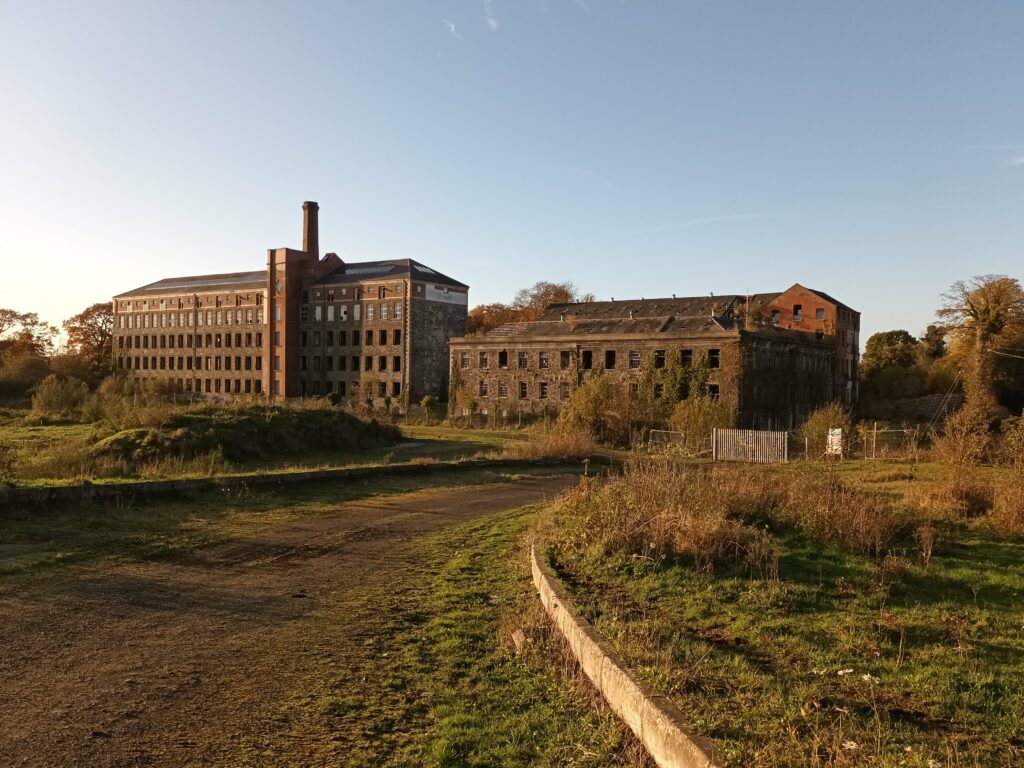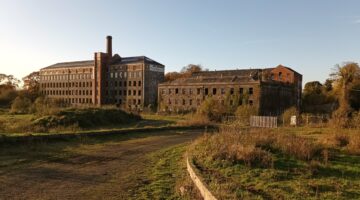There are currently twenty-eight mills on the Northern Ireland Heritage at Risk register with fifteen of those recorded as critical or high risk. Many of the mills have been subject to arson attacks, vandalism and are at threat of demolition. As rural and urban examples of our agricultural and industrial past, mills and factories contribute greatly to the story of the development of Ulster and Northern Ireland. One such at risk building, with an over one-hundred-year history, is Gilford Mill in County Down.
Gilford Mill, located just North of the village, lies in the townland of Loughans beside the River Bann. Waterpower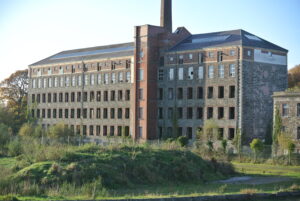 had been utilised in Gilford since the late 1600s and 1700s on a small scale for corn milling and woollen cloth finishing, however, entrepreneurial linen merchants in the early 1800s started to reorganise the linen industry by centralising and combining production. As a result, mills and factories grew in size and output soared. The “mill town” was born and was to provide consistent employment for residents for more than a hundred years. Gilford is one such mill town.
had been utilised in Gilford since the late 1600s and 1700s on a small scale for corn milling and woollen cloth finishing, however, entrepreneurial linen merchants in the early 1800s started to reorganise the linen industry by centralising and combining production. As a result, mills and factories grew in size and output soared. The “mill town” was born and was to provide consistent employment for residents for more than a hundred years. Gilford is one such mill town.
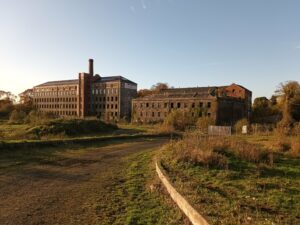
The sprawling site dates back to 1834 when Hugh Dunbar a descendant of a linen family decided to establish a thread spinning works on the site. Dunbar entered into a partnership with William Agnew Stewart and Robert Thompson in order to raise the necessary funds. By the end of 1838 thread was being produced and by 1841 the mill was in full production. It was an immediate success and soon attracted large numbers of workers to the town. Terraced houses for the mill workers were built and the area around the mill was called Dunbarton after Hugh Dunbar. Hugh Dunbar provided land for building Presbyterian, Methodist and Roman Catholic congregations in the village and provided a schoolhouse and a fever hospital. This was quite typical of the enlightened mill owners of the time who provided community amenities and encouraged their workers to improve their quality of life. Other similar mill settlements include Milford, Sion Mills and Bessbrook.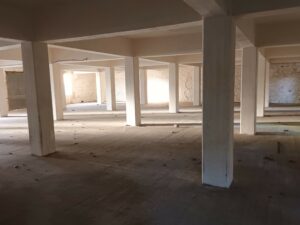
Hugh Dunbar died in 1847 and his relatives sold their interest to John Walsh McMaster. McMaster moved into Hugh’s recently finished Dunbarton House and even named his son Hugh Dunbar McMaster. Subsequently the name Dunbar, McMaster and Co was established. By 1870 the mill was employing over 2000 hands. It was formed into a private company in 1886 and later in 1901 joined Barbours of Hilden and other companies to form the Linen Thread Co Ltd. The mill produced twine for fishing nets, bookbinders’ thread, threads for leather and thick cloths, shoelace and thread for sewing machines.
The main six storey flax spinning mill was constructed in various stages from the late 1830s to the early 1900s and was by far the biggest industrial operation on the Upper Bann River. The building is of rubble blackstone with vee jointed granite quoins. This is contrasted with the 6th storey early 1900 addition which is of polychrome brick. Off-centre is a projecting tower housing a goods lift. Other associated buildings are dotted around the complex, such as a flax store and weigh room, engine house and stores. An octagonal chimney sits behind the main building resting on a square brick base. Originally the site was powered by a waterwheel 22ft diameter by 20ft wide and said to be designed by the noted engineer William Fairbairn. Fairbairn is also attributed to a waterwheel further up the Bann at Hazelbank.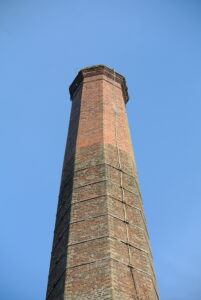
Although unfortunately the mill pond to the front and a number of the ancillary buildings have not survived, around the remaining buildings there are the different clues as to where building materials and fixings came from. Iron railings and sliding iron doors from Manchester, bricks from Kilmarnock, metal brackets from Riddels Belfast, a W&T Avery weigh bridge from Birmingham, and clay tiles from Flintshire. All these small features build a picture of the quality items that once embellished the mill and indeed many others across the country. It also shows how interconnected local and regional trade was at the time. Other features include the brick vaulted ceilings inside the mill (an early form of fireproofing) and cast-iron columns supporting the ceilings. This adds a cathedralesque feel to the industrial space. Archive photos from the McCutcheon collection held in the Department for Communities Historic Environment Record of NI show production machinery designed and made in the then industrial powerhouse of Belfast. Combe Barbour’s works on the Falls Road had a worldwide reputation and the photograph here shows a powered reeling frame from the Brookfield Foundry of Cotton and Company.
After the Second World War working in the linen factories and mills was not the attraction it had been in the past. The factory struggled to find local labour to work in the mill and transported workers from as far away as Monaghan to work. The mill put workers up in hostels instead of having a guaranteed terraced mill house as in the past. The workforce in the 1950s was 300 and raw flax was being imported from Belgium. It later produced viscose carpet yarn which was dyed on site.
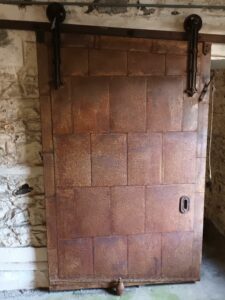
Production ceased in 1986 and like many large abandoned industrial sites fell victim to vandalism and went unmaintained. The apparent inability to recognise the significance and future potential of these magnificent industrial complexes has left a void at the heart of many proud communities. Plans were developed in the early 2000s to transform the buildings into a retail centre but these plans stalled and ultimately failed. However, in 2016 the Karl group bought the site and recently plans were revived to reuse the different buildings. Plans for a mixed-use development including a restaurant, garden centre and residential apartments have been produced. In addition to this, visitors can appreciate the size and scale of the buildings by taking a stroll on the Gilford riverside trail which runs beside the site.
It is hoped that a conservation led programme of works can preserve the feel and features of Gilford mill. Investment and reuse of this building of both huge proportions and potential could stimulate the village providing new sustainable opportunities and developments through heritage-led regeneration. More importantly, if the scheme is successful, it would send a message to mill owners across the province of the value of preserving these industrial giants, and show that they can, and should, have a bright future ahead.
First published in RSUA Perspective November 2021

